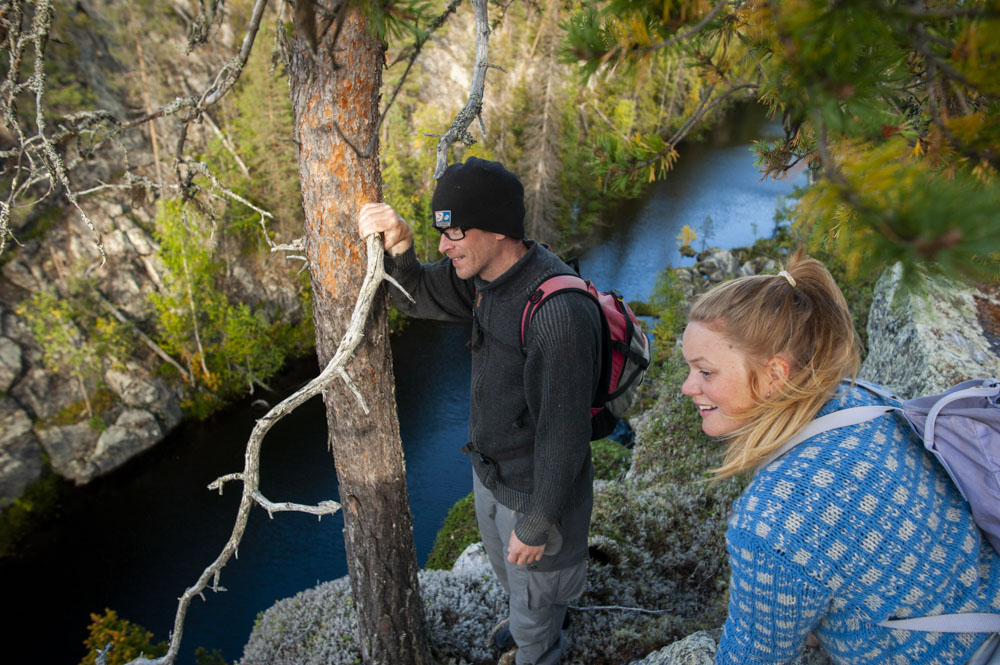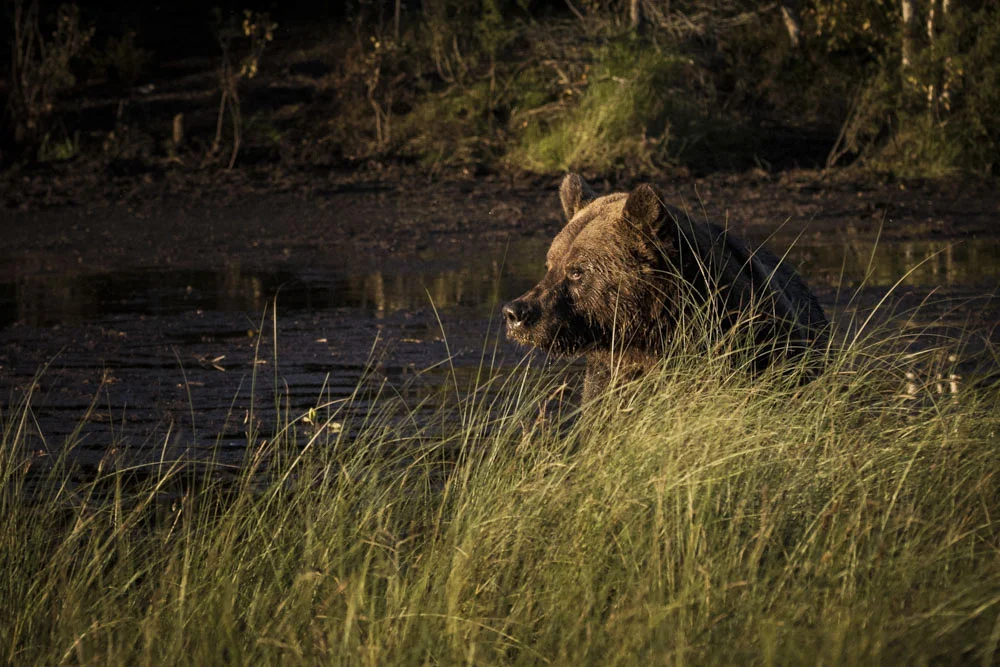Paddling Oslo's hidden wilderness

Oslo - Norway's capital, is where Thea grew up. For us, the beauty of Oslo is not just its many cafes or museums. The real beauty of Oslo is its close proximity to true wilderness. Just 20 minutes from central Oslo, we set off on light, packable Ally canoes. Into the cold fresh water of Østmarka - the "East Forest". With its wonderful nature, wildlife and recent sightings of a pair of wolves, this nature reserve felt like true wilderness. In this post you can read about our adventure from Oslo, and at the end you can find out how to discover it for yourself.
Canoeing with Bjørn and Ludo
This post was made possible with help from the Slow Adventure in the Northern Territories (SAINT) project. Read more about our fantastic new sponsor here! Although this post is sponsored, all opinions are our own.
Discovering Østmarka: Oslo's East forest
In summer, Østmarka is busy with locals bathing in the warm lakes, having picnics and hiking trails. As autumn starts to colour the landscape gold, people are fewer. Bjørn (and "Ludo" - a lovely Portuguese water dog), showed us how to access the remoter parts of this forest, including a protected nature reserve. What we found was true wilderness wonderfully accessible by canoe & paddle.
Paddling in Østmarka
Paddling Østmarka's lakes toward wilderness
This was our first guided canoe trip together. We felt lucky that our trip started only 20 minutes away from Oslo city. When we met Bjørn he was already busy setting up our canoes, and shortly after we were wheeling two canoes out of the car park. We "put-in" at Mønevann and found it amazing how quickly the city faded into nature. It felt like we sneaked our way out of the city, almost whispering while we thought of the many people at their desks just minutes away.
Immersing in wilderness
Avoiding the weekend meant we had this playground to ourselves. As we progressed, the landscape changed - our surroundings becoming wilder. Tree species changed as we saw more pine, oak and rowan - tangled pine branches against yellow birch leaves showing the early signs of Autumn. Being in a canoe meant that we adjusted to the rhythm of the landscape, slowly immersing ourselves to the wilderness.
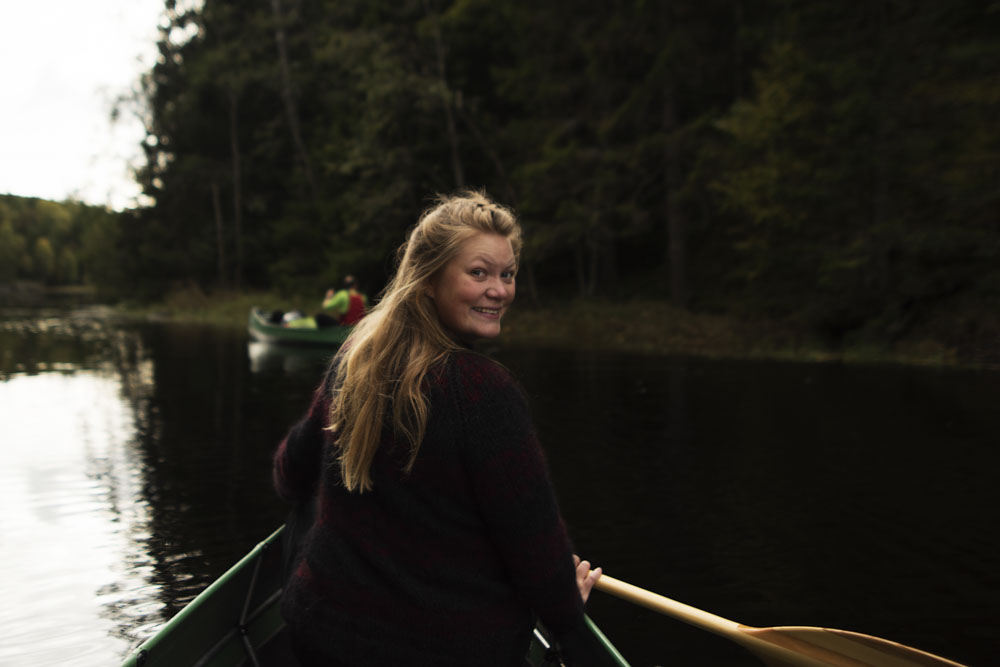
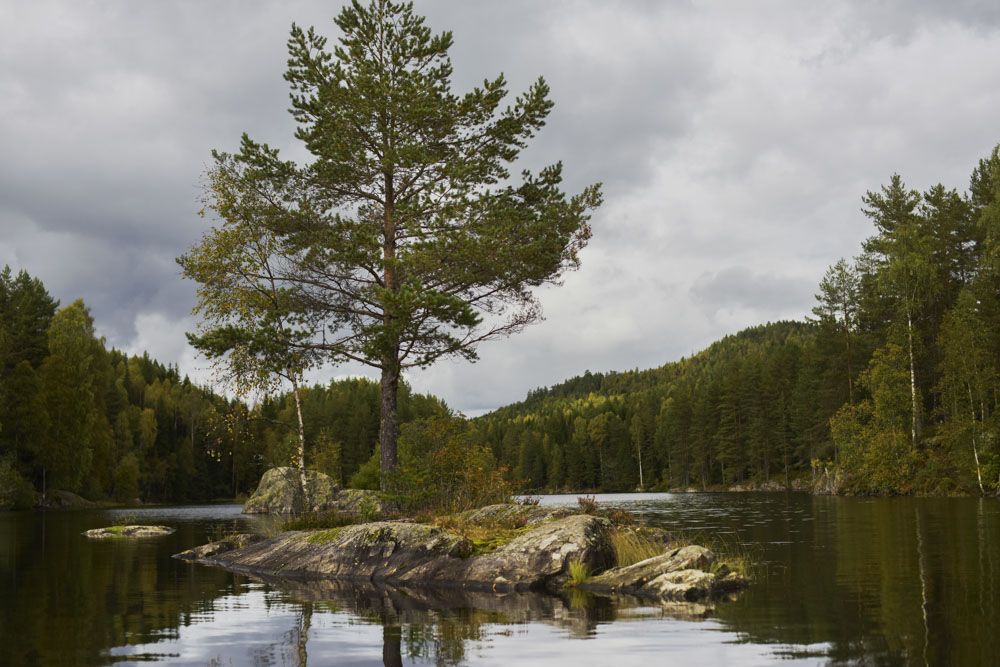
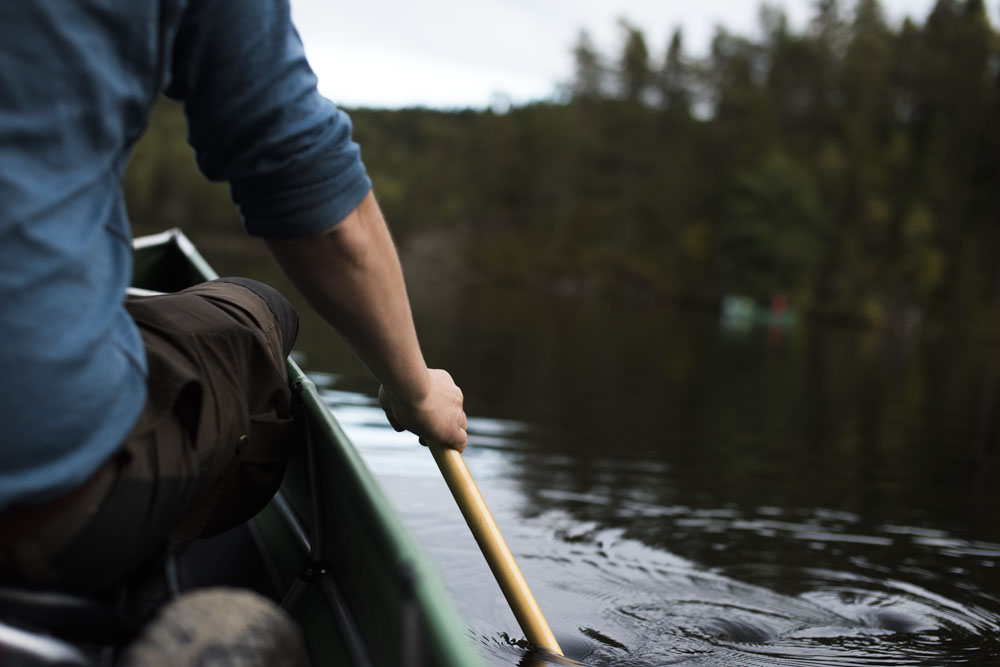
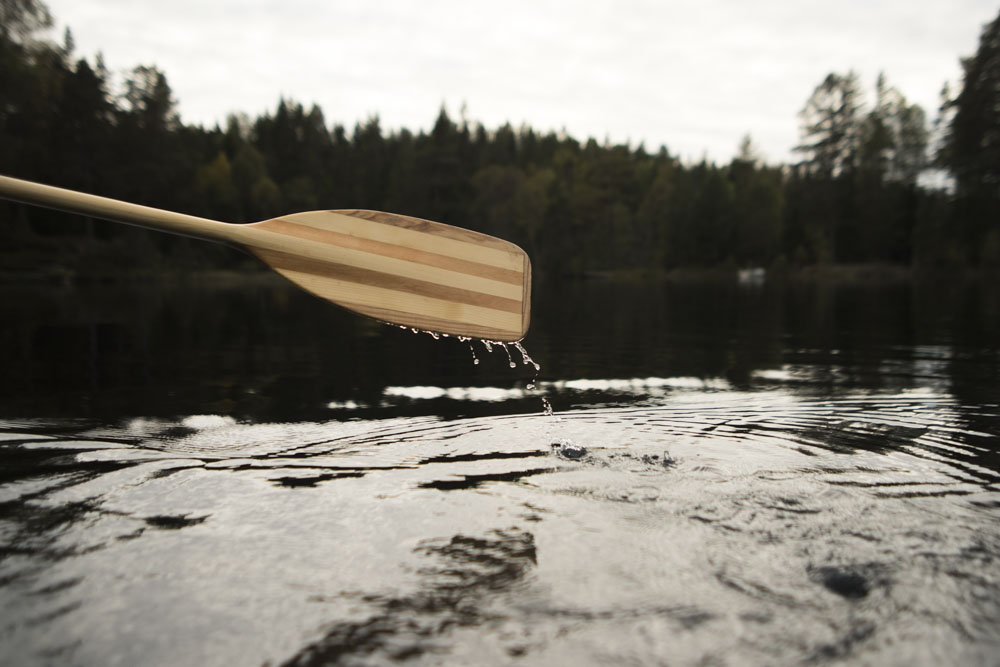
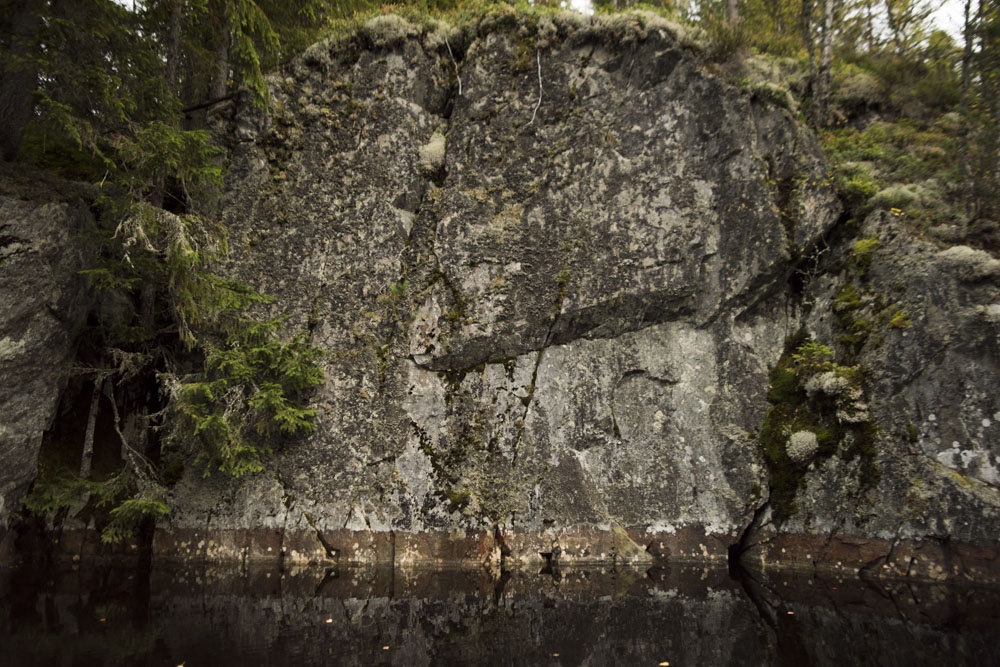
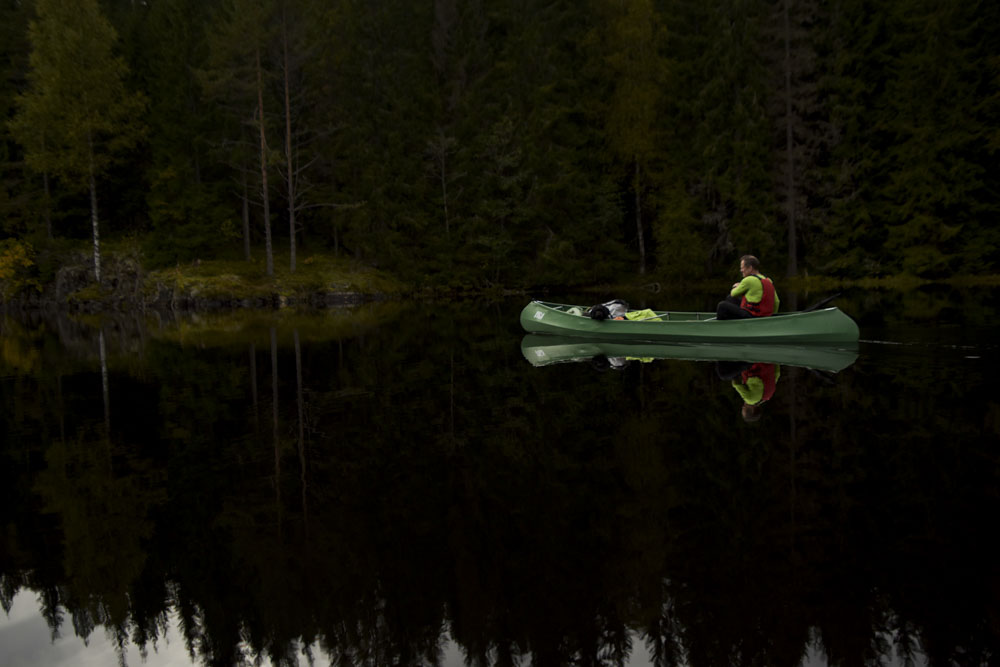
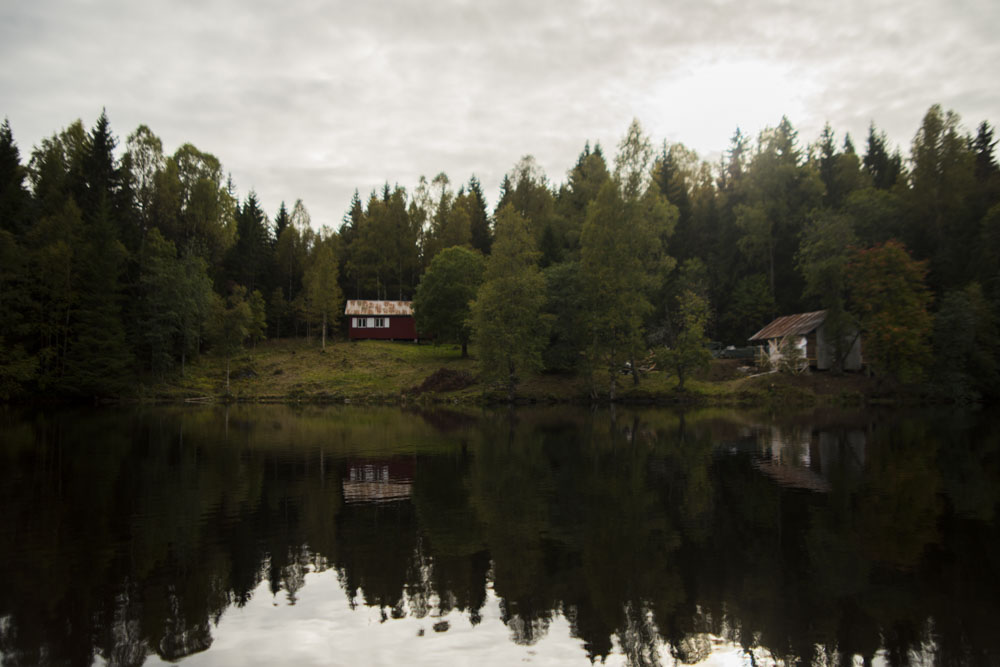
Go emotionally slow, not physically slow
This adventure proved to us that a slow adventure does not have to be physically slow, to be a slow adventure. Bjørn took us right into the heart of the forest, portaging three short stretches of land on our way. Bringing everything out of the canoe and carrying our stuff over to the next lake is hard work. The reward comes in the walking back for the canoe, suddenly being light on your feet and stretching out the legs while appreciating a different perspective.
It is the connection to the place that makes an adventure slow, not your physical speed. It's strange how with a slower, journeying mindset the canoe becomes lighter. A portage becomes simply another phase of the trip and, in the end - it's this gentle struggle that makes you feel satisfied. To be comfortable in nature we find that we need to smooth out the challenges and make them enjoyable.
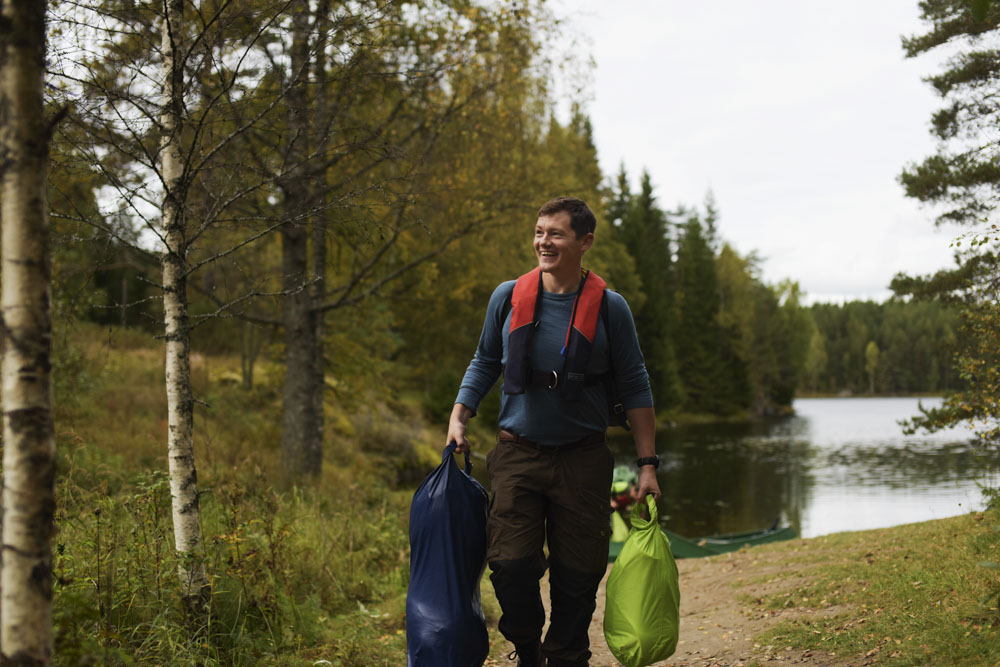
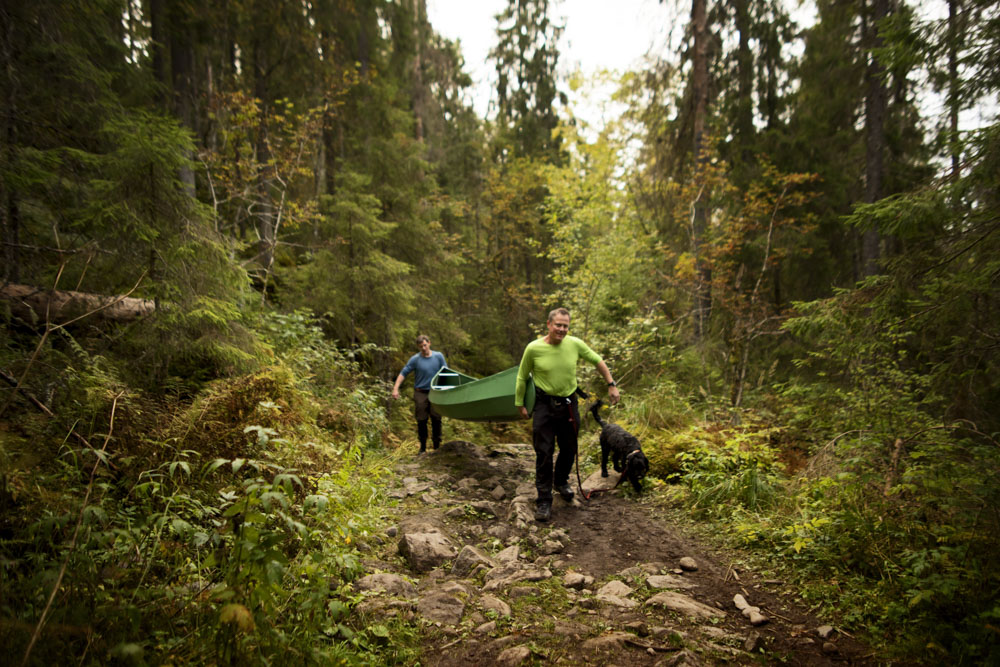
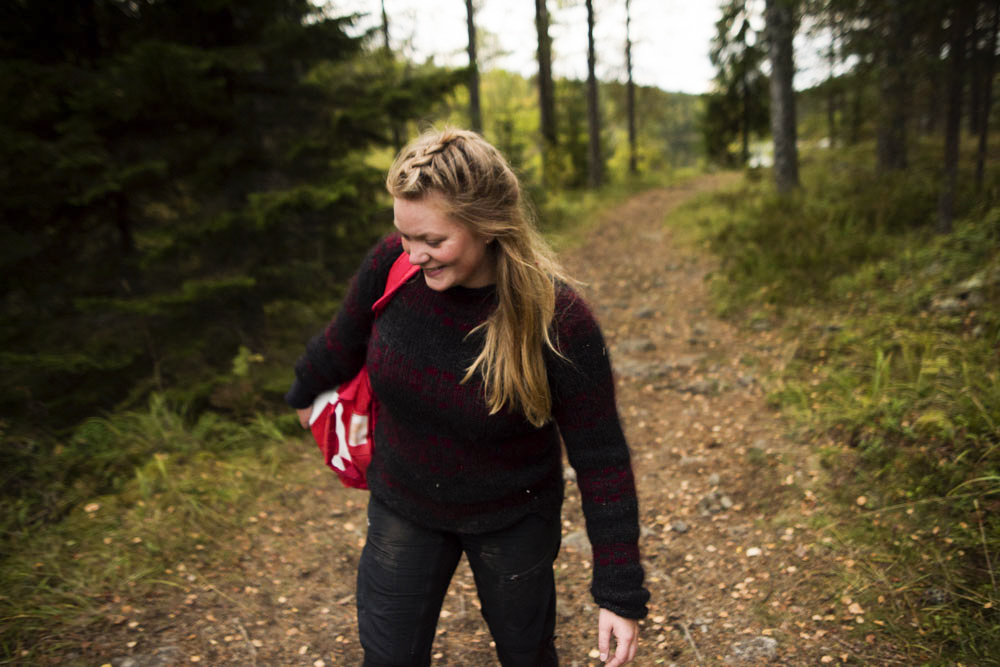
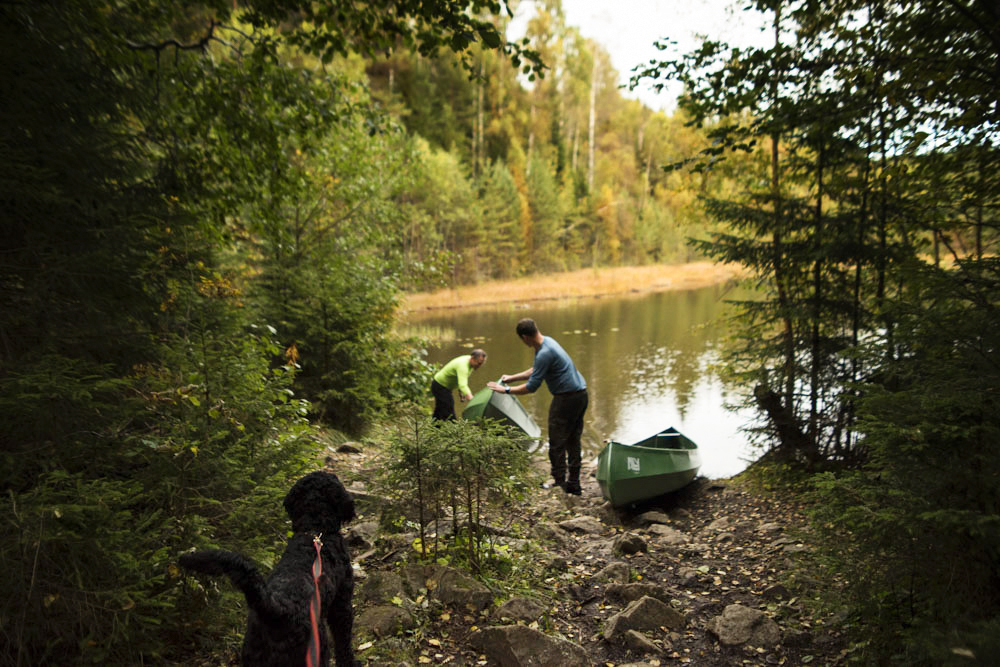
Our lake-side home
It's exciting when you turn a corner of the lake to see your final destination for the first time. It's what we've worked for the whole day, and that gave us a certain feeling of home. We brought both canoes up and pitched our tents on an opening in the forest, at a place called Tappenberg.
It's not often a Norwegian person gets to go on a guided tour in Norway. It's often something we don't do, however having a guide makes so many things easier! Bjørn prepared all our gear, and all the food. He brought wood because we were in a nature reserve, and he took care of the cooking. This meant that we took care of ourselves and had time to enjoy the little things.
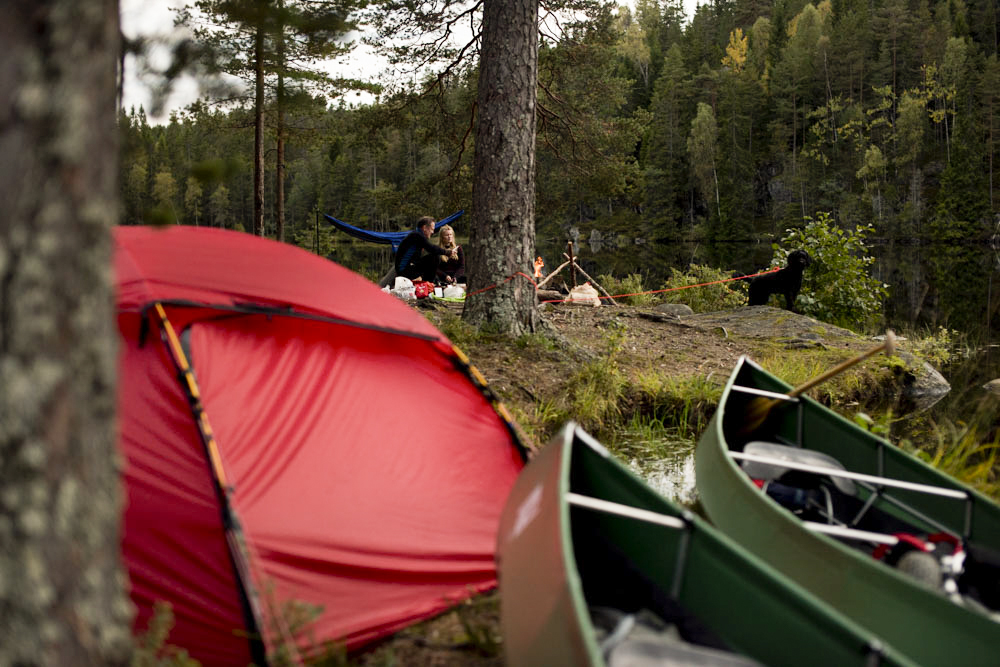
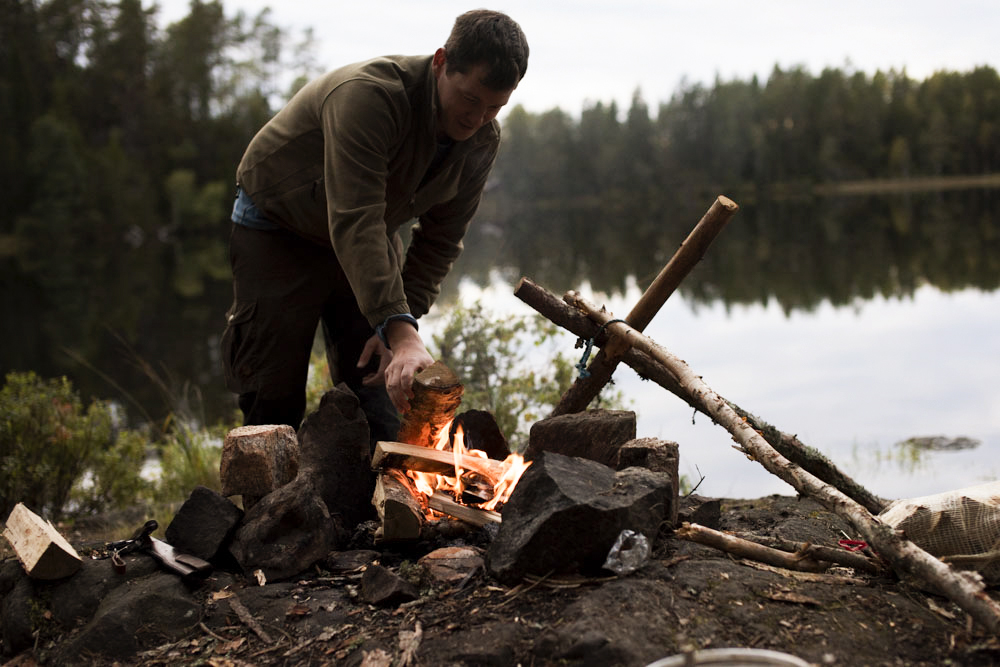


Campfire dinner with reindeer
One of the most time-consuming things to do in nature is to cook. Especially cooking on a fire. Bjørn used both a Stormkjøkken stove and the fire to treat us to lovely reindeer steaks with asparagus, cooked with pistachio nuts, and a mushroom risotto which paired perfectly with the meat. We got to relax, breathe in the view and absorb his culinary skills which let us appreciate the value of having a local guide.
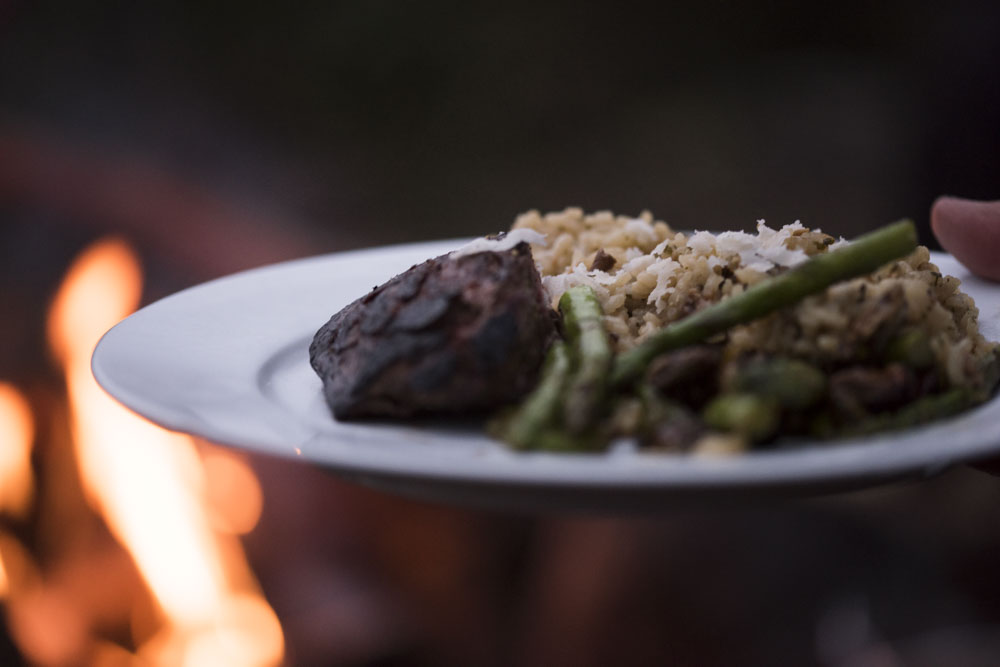
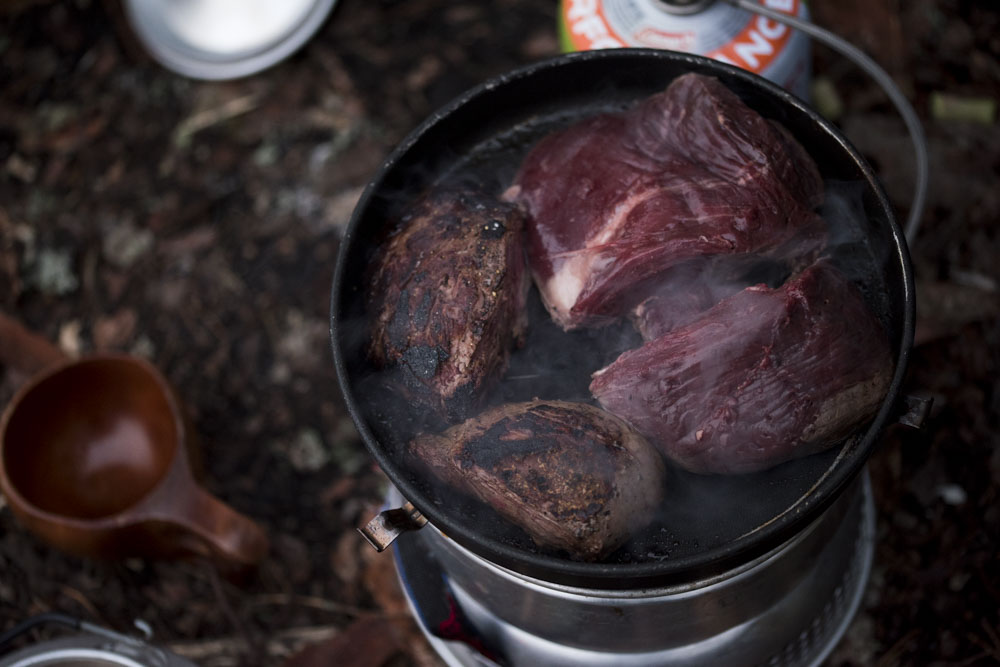


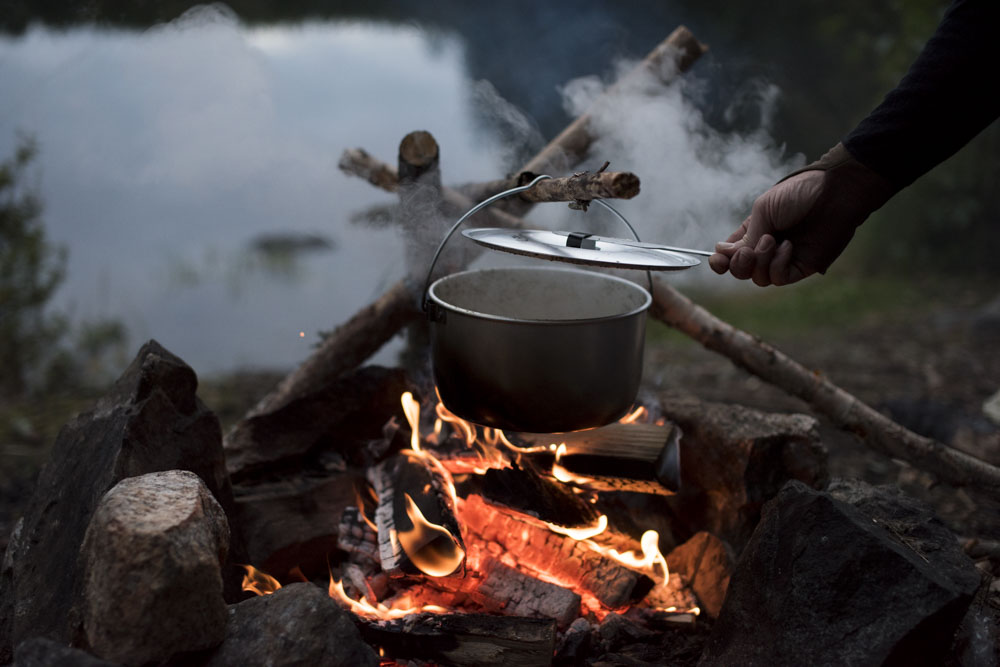

Well rested
We find canoeing is harder work than it appears, and demands lots of rest. There’s something magic about retiring into the tent - that sudden shift from vast openness to private closeness. Having warmed up by the fire, the muscles and joints sigh into the sleeping bag and we slept like logs.
Waking up to the sounds of breakfast prep is like getting a surprise birthday. Bjørn and Ludo were up early, but there was no rush. We were treated again - this time with a Norwegian breakfast, tea and coffee, and so built up momentum to start paddling again, smiling as we realised the portages would be downhill today.

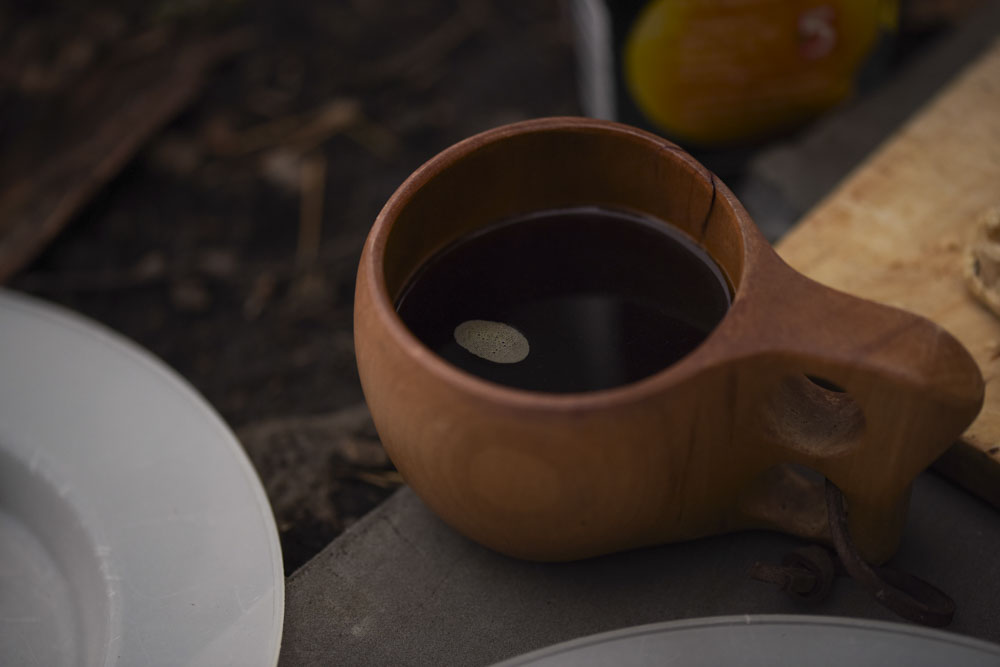
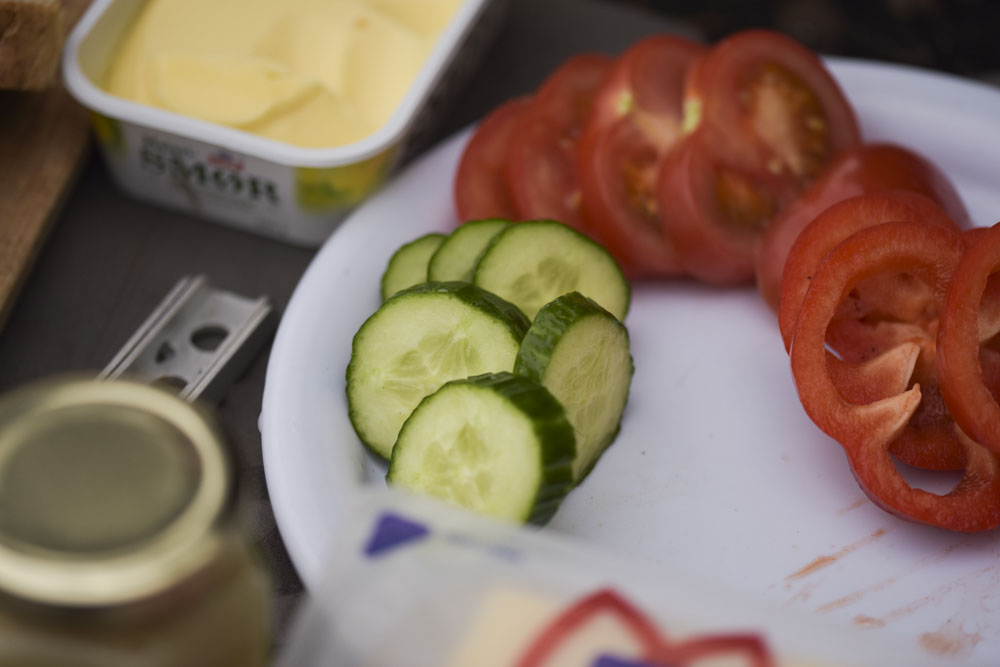
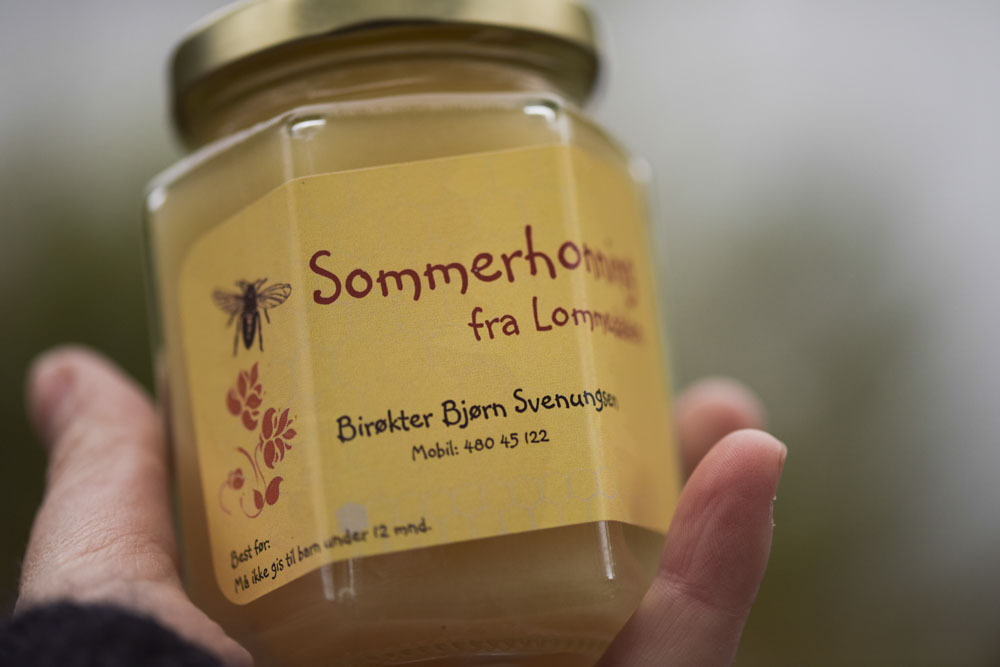
Stepping stones from home
Knowing forest intimately is a true benefit of canoe paddling. Once you really know this piece of Østmarka, it feels yours - like you’ve gained something in your adventure handbag. Knowing that it’s there - just stepping stones from home, made us feel rich. Being there during the week was a bonus - knowing most people were occupied on the other side of the invisible work/recreation divide. A line in the sand that’s easily paddled across.
Hammock heaven
Do your own wilderness adventure from Oslo
To have someone dedicate their attention to navigation, safety and overall experience, the small things that give a slow adventure a certain magic, meant that we were more immersed in the adventure than usual. Somehow more mindful and less distracted. Our attention less pulled to the map or time or a concern that sometimes occupies our adventure span.
For anyone looking to take an easier, more relaxed yet personal trip, we’d absolutely recommend Bjørn at Oslo Outdoor. It would enrich future adventures with little investment in time or cost, and give the adventure a wonderful local touch that’s hard to find.
Oslo Outdoor: www.oslooutdoor.no, can be reached by Email: mail@oslooutdoor.no or Phone: +47 480 45 122
More Norwegian adventures: www.wild-norway.com
We'd like to thank SAINT, the Northern Periphery and Arctic Programme, and the European Union for their support in making this post happen!
The SAINT project: www.saintproject.eu






